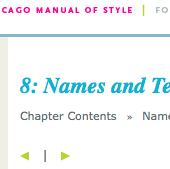At Gonzaga University, most professors require their students to use APA Style in their papers. APA attempts to focus on maximum precision and clarity as writers attempt to portray their ideas on paper. However, since I’ve been working at Capital A, I have been using The Chicago Manual of Style as a guide for all editing work. If you’ve been told that both styles are the same, you have been misled. Chicago style and APA style differ substantially from one another.
The Difference Is in the Style
Because the work I do at Capital A is very different from anything I write at school, I haven’t found many blaring contradictions while working. Despite this, I have been able to become familiar with both styles and notice the small differences in the guidelines of each. The two styles offer different emphases on select aspects of writing. I have found APA style to stress how to avoid plagiarism as well as how to correctly cite sources, which is why it is commonly used in universities. Chicago style offers a well-rounded base for all categories of writing, without focusing on one more than the other. Chicago style is tends to be used more in the publishing world. APA style was originally created by a group of scientists who hoped to establish a common form of communication.
What I’m Using: A Website and a Manual
At Capital A, I use the online Chicago Manual of Style website to help me out. In class, I have the actual APA Style Manual. Looking up answers for my inquiries while writing is tedious using the manual. Various Gonzaga journalism professors advise students to read through the manual often, and get familiar with the rules so they don’t have to constantly refer to the book.
On the other hand, Chicago’s website has been an awesome tool. It is extremely well organized and easy to read. Maneuvering through the material has been made user friendly with comprehensible titles and headings. There is nothing more frustrating than going on a website, knowing the information you’re looking for is there, and not being able to find it. Of course the lovely turquoise and pea green text with hot pink accents on Chicago’s site allows for a pleasing experience as well.
I know I can’t end this blog without enlightening you with an interesting tidbit that I’ve learned by flipping through the pages of style this year. Did you know that geese are called Canada geese, not Canadian geese? A goose can only be Canadian if it is from Canada, and we have no way of knowing that. So next time you come across a Canada goose remember, he might be American.
